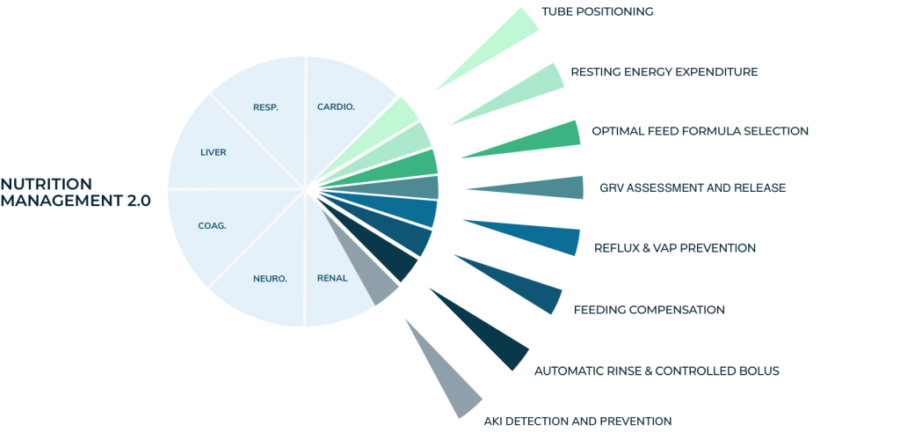Optimal nutrition therapy as a component of critical care
by Prof. Pierre Singer, MD
For decades, enteral nutrition has been administered to critically ill patients using volumetric pumps, through nasoenteral tubes. Patients were subjected to risks including tube malposition, severe reflux and gastric aspiration as well as acquired hospital pneumonia. Most of the time, nutritional targets were not achieved and under-nutrition was common.
A recently developed technology has changed this traditional approach, proposing a completely new and comprehensive practice that will provide enteral nutrition with a revolutionary, sophisticated, safe and efficient answer to unmet needs.
- Precise positioning of the nasogastric tube: Offers the security of right positioning, while decreasing the risks of malposition in the lung, nasopharynx or esophagus, thus decreasing the risk of aspiration
- Defining energy requirements: Calculates energy expenditure using REE (Resting Energy Expenditure) measurements and gives the physician a precise energy target. This will decrease over- and underfeeding.
- Planning nutritional therapy: Uses sophisticated software supporting the physician’s decision when choosing between all the available formulas and defining the rate of administration accordingly
- Preventing massive reflux and aspirations: Using sensors detecting gastro esophageal reflux and opening the nasogastric tube in case of massive reflux as well as inflating an esophageal balloon to prevent progression of the reflux toward the nasopharynx
- Compensating the lack of feeding: By measuring the missing calories and compensating energy and protein that has not been administered due to large gastric residual volume or interruption of the feeding process (transport to CT scans or OR)
- Diagnosing renal impairment: Detecting drop by drop changes in urine output and alerts for decrease in urine output.
This new technology provides an innovative solution to nutritional failure: An increase in safety, precision, adequacy of prescription, prevention of undernutrition and continuous monitoring are among the main advantages offered by the smART+ platform.
Like hemodynamic and respiratory systems, metabolism and nutrition can now be closely monitored, creating a new paradigm and proposing a tremendous upgrade to medical nutritional therapy for the critically ill.


 USA Site
USA Site 